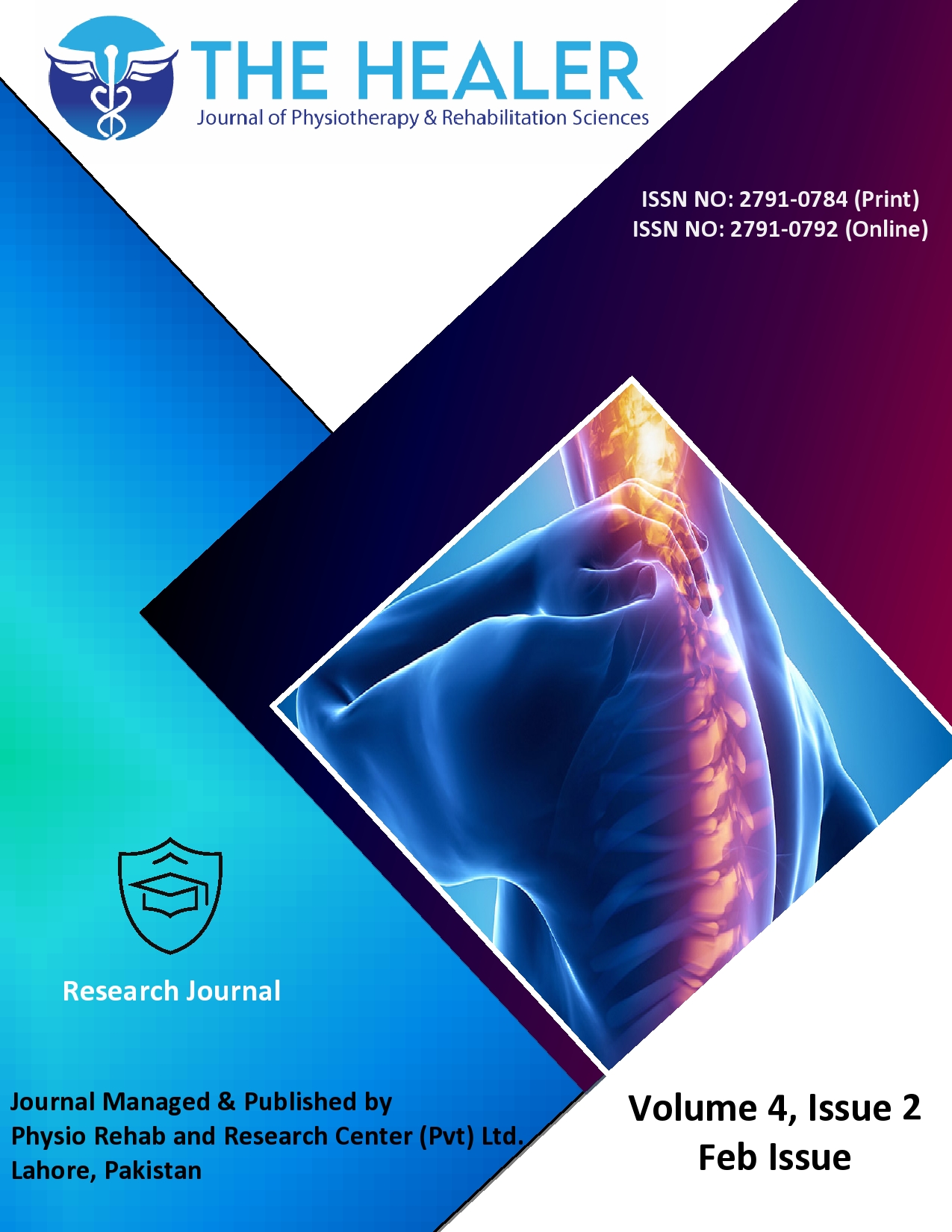Effects of Neuromuscular Electrical Stimulation on Motor Function of Hand in Patients with Chronic Ischemic Stroke: A Randomized Controlled Trial
Neuromuscular Electrical Stimulation in Chronic Stroke
DOI:
https://doi.org/10.55735/hjprs.v4i2.212Keywords:
Fugl Meyer scale , hand-held dynamometer, hand strength, ischemic chronic stroke, motor function, neuromuscular electrical stimulationAbstract
Background: Stroke is the leading cause of death and disability in many areas of the world. Underdeveloped, developing and developed countries all are showing marked increases in the ratio of stroke patients. Neuromuscular electrical stimulation is used widely for motor rehabilitation of hemiplegic stroke patients worldwide. Application of neuromuscular electrical stimulation on the affected musculature improves action potential and resulting muscle contraction. Objective: The objectives of the study were to find out the effects of neuromuscular electrical stimulation on motor function and strength of the hand in hemiplegic ischemic chronic stroke patients. Methods: A randomized controlled trial was conducted on chronic stroke patients gathered from Sheikh Zayed Hospital, Rahim Yar Khan. The participants were selected and allocated using the coin toss method. A total of 144 participants were selected and equally distributed into two groups. The sampling technique used was non-probability purposive sampling. Participants included in the study were male and female patients between 40 to 60 years, hemiplegic patients having a single episode of ischemic chronic stroke diagnosed by the neurologist. The Fugl Meyer assessment scale is used for the upper limb while handheld dynamometer is used both for assessment of strength. The normality of data was assessed using the Kolmogorov-Smirnov test. The between-group comparison was done by Mann-Whitney U test. The Wilcoxon rank test was used to see the difference between outcome measures at baseline and after the treatment. Results: The results showed that there was a significant difference of ≤ 0.05 between the control group and the interventional group. The mean score of the Fugl Meyer assessment scale at baseline was 7.46 and after four weeks of treatment was 9.90. On the other hand, the handheld dynamometer showed a score of 14.41 at baseline and 17.74 after four weeks of treatment. These marked differences in results between the two groups showed the significant effects of stimulation on the motor function of the hand in hemiplegic ischemic chronic stroke patients. Conclusion: It is concluded from the study that neuromuscular electrical stimulation is very effective in improving the motor function of the hand in chronic stroke patients.
Downloads

Downloads
Published
License
Copyright (c) 2024 The Healer Journal of Physiotherapy and Rehabilitation Sciences

This work is licensed under a Creative Commons Attribution 4.0 International License.














